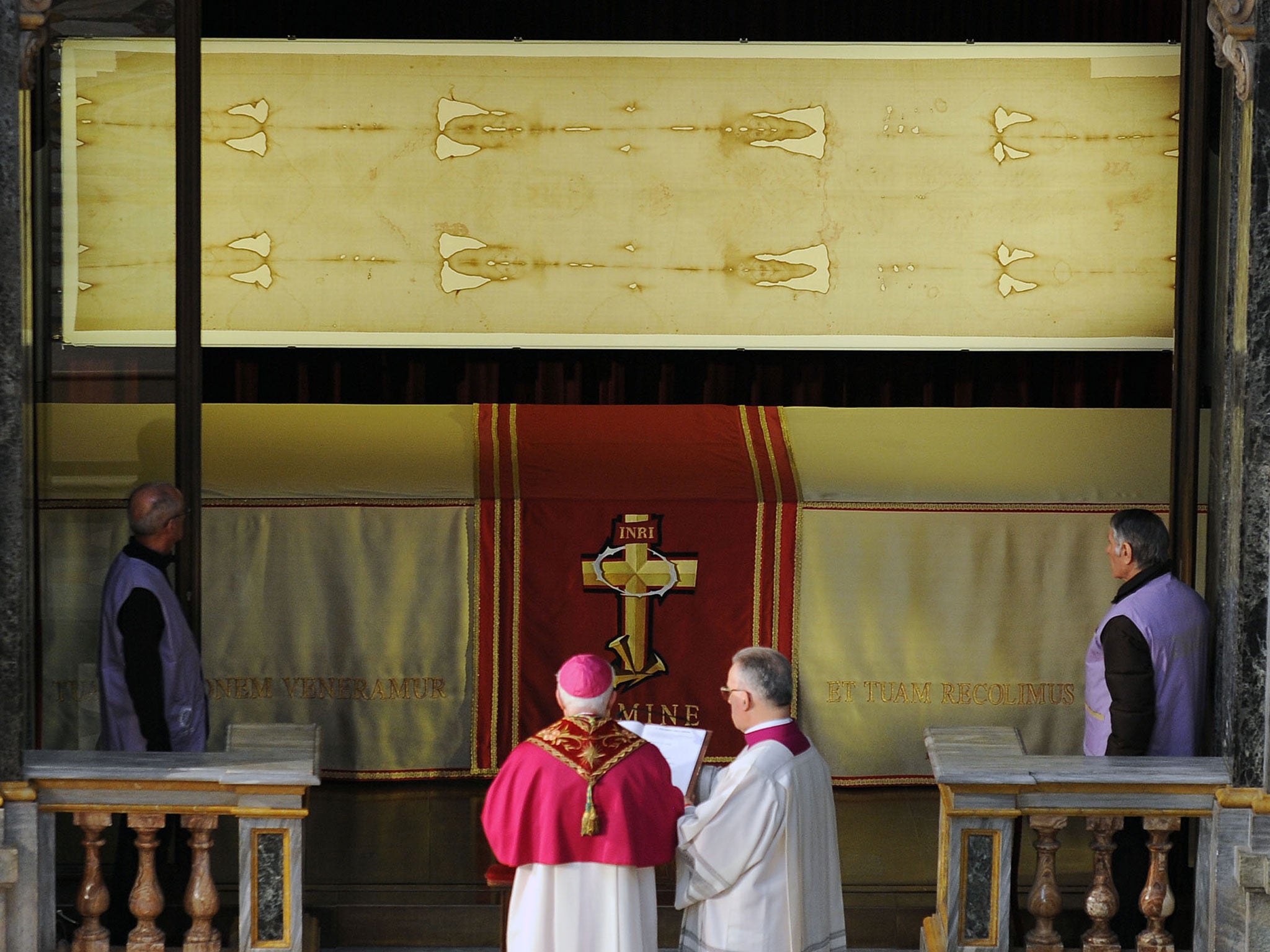Turin Shroud: DNA and pollen from all over the world found on cloth, new study finds
Some believe the shroud was used as Jesus' burial parchment

Your support helps us to tell the story
From reproductive rights to climate change to Big Tech, The Independent is on the ground when the story is developing. Whether it's investigating the financials of Elon Musk's pro-Trump PAC or producing our latest documentary, 'The A Word', which shines a light on the American women fighting for reproductive rights, we know how important it is to parse out the facts from the messaging.
At such a critical moment in US history, we need reporters on the ground. Your donation allows us to keep sending journalists to speak to both sides of the story.
The Independent is trusted by Americans across the entire political spectrum. And unlike many other quality news outlets, we choose not to lock Americans out of our reporting and analysis with paywalls. We believe quality journalism should be available to everyone, paid for by those who can afford it.
Your support makes all the difference.Scientists have added to the complex and controversial tales of origin surrounding the Turin Shroud, by revealing the myriad locations of the DNA and pollen that are present on the cloth.
The length of linen is highly contentious. Some Christians believe the fabric – which is kept in the Cathedral of Saint John the Baptist in Turin - is the burial shroud of Jesus of Nazereth, dating back over 2,000 years.
However,previous scientific studies have suggested that the cloth, which appears to be imprinted with the image of a man, may in fact be from the 13th or 14th century - centuries after Jesus is believed to have died.
Now, a new study by Italian researchers published in the prestigious science journal Nature gives a further insight into the potential origins of the cloth.
To make their findings for the paper entitled 'Uncovering the sources of DNA found on the Turin Shroud', the team behind the study sequenced the DNA of pollen and other dust from the cloth.
By doing so, they were able to pinpoint the biogeographic origin of the people who came into contact with the shroud.
The authors found traces on the parchment from people and pollen from around the world, including Europe, south Asia, eastern Africa and the Middle East.
Researchers said that the findings could indicate that that the shroud made its "historic [...] presumed journey" from the Near East and was taken around the world before being kept in Italy; or that it has its origins in medieval Europe where and was contaminated by those who travelled to it.
In a further twist, the study indicated that it may have been manufactured in India.
Join our commenting forum
Join thought-provoking conversations, follow other Independent readers and see their replies
Comments